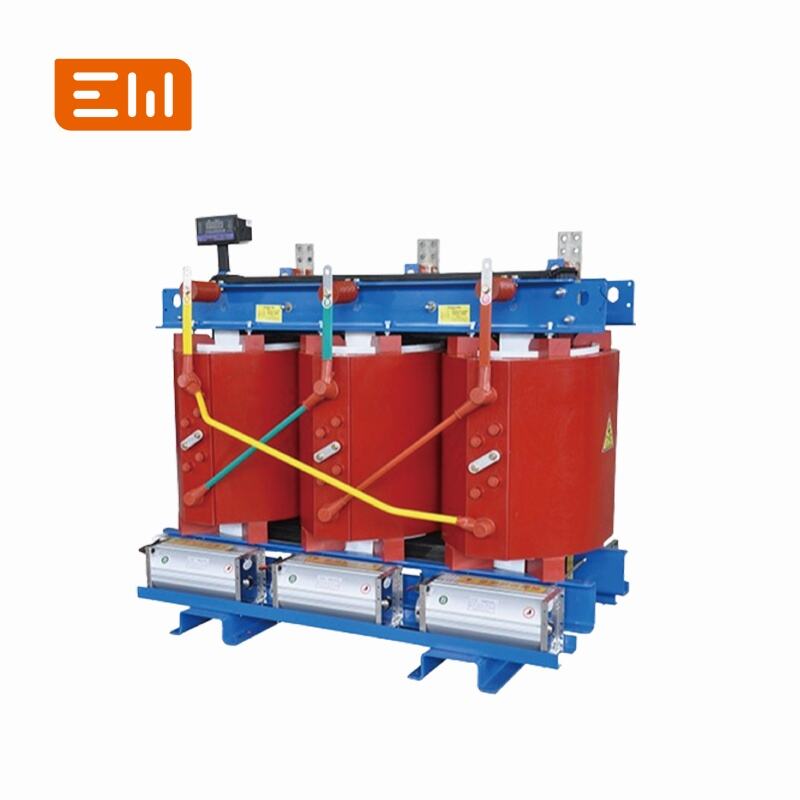Dry Type vs. Oil-Immersed Transformer: Which is Right for You?
When selecting a transformer, one of the most fundamental decisions is the choice between a dry type and an oil-immersed unit. Both are designed to perform the same core function—transferring electrical power—but their design, construction, and operating characteristics make them suitable for very different applications. This guide will provide a detailed comparison to help you determine which transformer is the right fit for your project.
For a complete overview of transformer technology, you can always refer to our https://www.enweielectric.com/blog/ultimate-guide-to-dry-type-transformers">Ultimate Guide to Dry Type Transformers.
The Core Difference: Cooling and Insulation
The primary distinction lies in how they manage heat and insulate their internal components.
- https://www.enweielectric.com/products/transformers/oil-immersed-transformers">Oil-Immersed Transformers use mineral oil or a similar dielectric fluid to insulate the windings and dissipate heat. The oil is a highly effective coolant, allowing for a more compact and often more efficient design.
- https://www.enweielectric.com/products/transformers/dry-type-transformers">Dry Type Transformers use a system of solid, high-temperature insulation materials and rely on natural or forced air circulation for cooling. They contain no liquids, which is the source of their key advantages.
Head-to-Head Comparison: 7 Key Factors
Let's break down the comparison across the most important criteria for any project.
1. Safety and Fire Risk
Winner: Dry Type Transformer
This is the most significant advantage of dry type transformers. Since they contain no flammable liquids, the risk of fire or explosion is extremely low. They are often made with self-extinguishing materials like cast resin. In contrast, the oil in oil-immersed transformers is flammable, requiring extensive safety measures like containment basins, fire suppression systems, and specific clearances, especially for indoor installations.
2. Installation Location and Footprint
Winner: It Depends
- Dry Type: Their safety makes them the only viable choice for installation inside buildings, on rooftops, and in public-access areas like hospitals, schools, data centers, and high-rise offices. They can be placed closer to the load, reducing secondary cabling costs.
- Oil-Immersed: Because of the fire risk, they are typically installed outdoors in substations or in dedicated, fire-rated indoor vaults. However, for the same kVA rating, an oil-immersed transformer is generally smaller and lighter than a dry type, giving it a smaller physical footprint.
3. Maintenance and Inspection
Winner: Dry Type Transformer
Dry type transformers are virtually maintenance-free. They require periodic visual inspections and cleaning to ensure ventilation paths are clear of dust. Oil-immersed transformers require a more intensive maintenance regimen, including regular oil sampling to test for dielectric strength and contaminants, oil filtering or replacement, and monitoring for any oil leaks from gaskets and seals.
4. Cost: Initial vs. Total Cost of Ownership (TCO)
Winner: It Depends
- Initial Cost: Oil-immersed transformers typically have a lower purchase price than dry type transformers of the same capacity.
-
Total Cost of Ownership (TCO): The calculation is more complex. Dry type transformers often have a lower TCO in many scenarios due to:
- No costs for oil containment structures or fire suppression systems.
- Lower installation costs as they can be placed closer to the load.
- Significantly lower maintenance costs over their lifespan.
- No risk of costly environmental cleanup from oil spills.
5. Environmental Impact
Winner: Dry Type Transformer
Dry type transformers are the clear environmental choice. There is no risk of oil leaks contaminating soil or groundwater. At the end of their life, their core and coil components can be recycled more easily. Oil-immersed transformers pose a constant environmental risk if a leak occurs, and disposal of used oil must be handled according to strict regulations.
6. Performance and Efficiency
Winner: Oil-Immersed Transformer (Slightly)
Oil is a more efficient coolant than air. As a result, oil-immersed transformers generally have better overload capability and slightly lower energy losses, especially at higher loads. However, advancements in dry type technology, such as https://www.enweielectric.com/products/transformers/dry-type-transformers/scbh15-three-phase-dry-type-transformer">amorphous alloy core transformers (like the SCBH15), have drastically reduced no-load losses, making them highly efficient and competitive, particularly in applications where the transformer operates under light loads for extended periods.
7. Sound Level
Winner: Oil-Immersed Transformer
The core and windings of an oil-immersed transformer are submerged in oil within a steel tank, which provides significant sound-dampening. Dry type transformers, cooled by air, tend to produce a more noticeable audible hum. This can be a consideration for installations in or near quiet environments like offices or residential areas, though sound-dampening enclosures can mitigate this.
When to Choose Which: A Quick Guide
Choose a https://www.enweielectric.com/products/transformers/dry-type-transformers">Dry Type Transformer if:
- ✅ Safety is your absolute top priority.
- ✅ The installation is indoors, underground, or in a densely populated area.
- ✅ Environmental risks from oil spills are unacceptable.
- ✅ You require a low-maintenance solution.
- ✅ The installation is in a hospital, data center, school, or commercial building.
Choose an https://www.enweielectric.com/products/transformers/oil-immersed-transformers">Oil-Immersed Transformer if:
- ✅ The installation is outdoors in a secure substation.
- ✅ Initial purchase cost is the primary driver.
- ✅ The application requires very high overload capacity.
- ✅ A smaller physical footprint is essential.
- ✅ You have a robust maintenance program in place.
Conclusion: Making the Smart Choice for Your Application
The decision between a dry type and an oil-immersed transformer is not about which is universally "better," but which is right for your specific needs. While oil-immersed transformers remain a cost-effective solution for outdoor utility and industrial applications, the trend is clearly moving towards dry type transformers for almost all indoor and safety-critical projects.
The superior safety, minimal maintenance, and environmental friendliness of dry type transformers provide unmatched peace of mind and often a lower total cost of ownership over the equipment's lifespan.
At Enwei Electric, we offer a complete portfolio of both transformer types to meet any requirement. Our experts can help you analyze your project's needs to recommend the optimal solution.
Ready to make a decision?
- https://www.enweielectric.com/contact-us">Contact our team for expert advice and a custom quote.
- https://www.enweielectric.com/products/transformers/dry-type-transformers">Explore our advanced Dry Type Transformer solutions.
- https://www.enweielectric.com/products/transformers/oil-immersed-transformers">View our reliable Oil-Immersed Transformer options.

